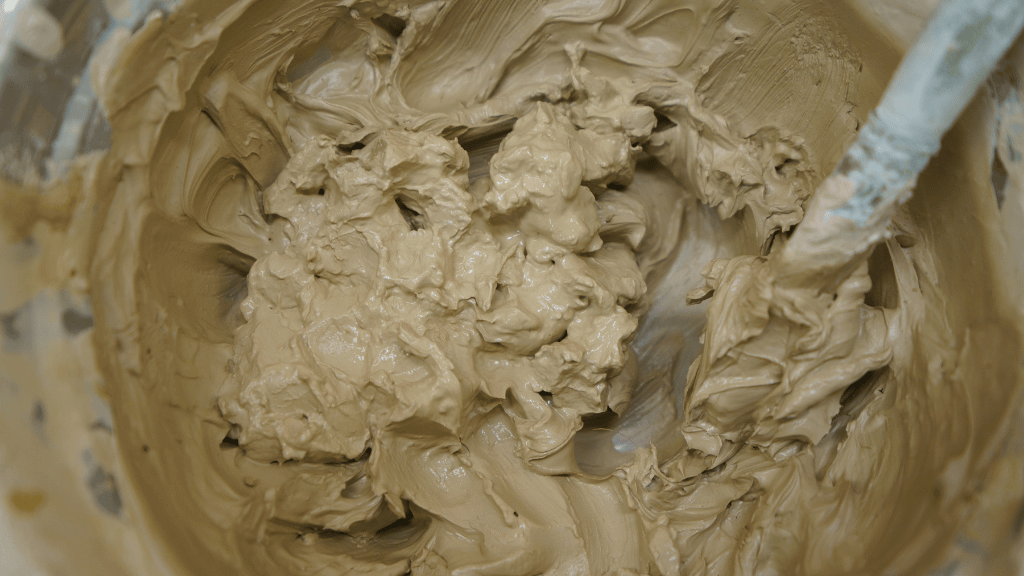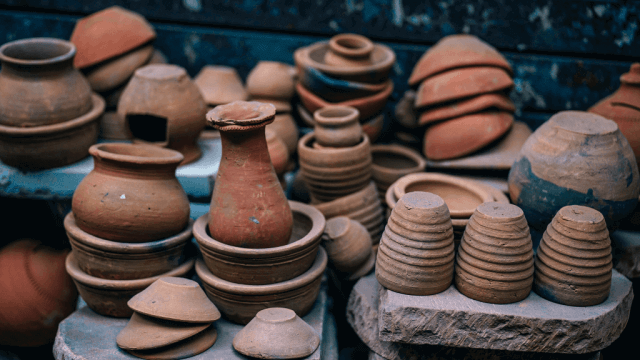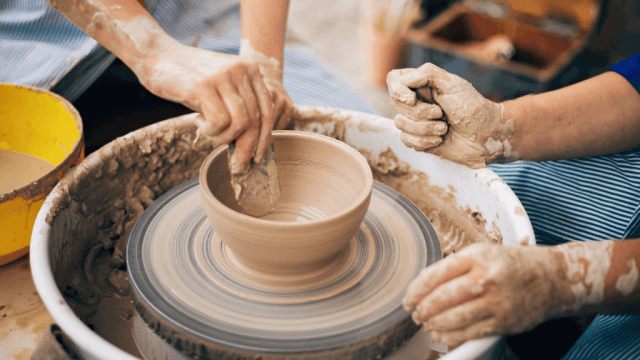The cost of pottery clay varies depending on the type, quality, and quantity purchased.
On average, it ranges from $0.50 to $2.00 per pound.
Bulk purchases can reduce the price significantly.
Local availability, shipping costs, and taxes may also affect the final price.
Factors Influencing Pottery Clay Costs
The cost of pottery clay can be impacted by various factors, such as clay type, quality, purchase quantity, local availability, and shipment expenses.
Type of Clay
Different types of pottery clay might have distinct prices.
Popular clay types include earthenware, stoneware, porcelain, and ball clays.
Depending on your specific needs, prepare to spend anywhere from $0.50 to $2.00 per pound for your preferred pottery clay type.
Clay Quality & Form
High-quality, pre-formulated clay mixtures tend to be more expensive than their low-quality counterparts, impacting pottery costs.
Similarly, clay sold in ready-to-use forms typically cost more than dry materials.
Buying Pottery Clay: Bulk Purchases & Sales
Bulk Buying Benefits
For those who work with clay regularly, purchasing clay in bulk has the advantage of reducing the cost per pound.
Some suppliers offer discounted prices when customers buy larger quantities, whether as a one-time purchase or with a membership.
Sales & Promotions
Always look out for seasonal sales, clearance events, and special promotions that offer reduced pottery clay prices.
This can significantly lower your pottery costs, providing an opportunity to try various clay types without breaking the bank.
Additional Expenses to Consider
Local Availability
Some types of pottery clay may not be readily available in your area, meaning you might have to purchase from an online or out-of-state supplier, resulting in potential shipping costs.
Taxes and fees may also vary depending on your location and can add to the final price.
Shipping Costs
Always factor shipping costs into your decision-making process.
As pottery clay is heavy and bulky, shipping can be relatively expensive.
Some suppliers might offer free shipping if you reach or exceed a specific minimum purchase threshold, while others might charge a flat rate or determine the cost based on delivery location.
Choosing the Right Pottery Clay
When calculating pottery costs, it’s essential to ensure you’re choosing the appropriate clay to meet your project requirements and skill level.
In addition to considering the cost per pound, factor in the clay’s properties, workability, firing temperature, and color after firing.
Earthenware
Earthenware clay typically offers a lower firing temperature (around 1,100-2,000°F or 590-1,100°C) compared to other types.
It’s a good option for beginners because of its malleability and affordability.
However, finished earthenware products tend to be more porous and can be prone to chipping or shattering.
Stoneware
Stoneware clay boasts impressive durability and a higher firing temperature (2,100-2,378°F or 1,150-1,300°C).
Though a bit more expensive, stoneware strikes a balance between workability and strength, and finished projects are typically microwave, oven, and dishwasher safe.
Porcelain
Known for its delicate, translucent appearance and high firing temperature (roughly 2,300-3,200°F or 1,260-1,760°C), porcelain clay is generally more expensive than its earthenware and stoneware counterparts.
It demands more time and expertise to work with, but it produces refined, high-quality pottery suitable for experienced artists.
Exploring Alternative Clay Options
In circumstances where traditional pottery clay isn’t ideal, you may wish to explore alternative materials that still allow for creative expression without affecting your pottery costs.
Air-Dry Clay
Air-dry clay doesn’t need to be fired in a kiln, making it a cost-effective and beginner-friendly choice.
Though finished projects might not be as durable as kiln-fired pottery, this non-toxic clay type is great for learning basic techniques and small crafts.
Homemade Clay
Creating your own clay mixture by combining raw materials can be both affordable and educational.
Homemade clay allows you to have greater control over its properties while potentially reducing pottery costs.
FAQ Section
Here we have compiled a list of frequently asked questions related to pottery clay costs and purchasing decisions.
Explore these FAQs to further clarify some common concerns before building your next pottery masterpiece.
What is the best type of pottery clay for beginners?
Earthenware clay is an excellent choice for beginners due to its affordability and ease of use.
It’s very workable and has a lower firing temperature compared to other clay types, making it a popular option for those starting in pottery.
Is it cheaper to buy pottery clay online or in a local store?
The price of pottery clay varies depending on location and available discounts.
Local stores may be more convenient for small purchases and help avoid shipping charges.
However, online retailers may occasionally offer better deals on larger quantities or a wider variety of clay types.
Compare both options before making a purchase to find the best price and consider the advantages of convenience and variety.
Can pottery clay be reused or recycled to save costs?
Yes, pottery clay that hasn’t been fired or subjected to chemical treatments can often be reclaimed and reused for other projects.
It’s essential to clean and re-wet the clay, followed by wedging and kneading to restore its original consistency.
Recycling clay can help minimize waste and reduce pottery costs over time.
Are there ways to extend the shelf life of pottery clay and save money?
To extend the shelf life of pottery clay, store it in an airtight container or tightly wrap it with plastic.
Store the clay in a cool, dark, and dry environment to prevent exposure to extreme temperatures or moisture, reducing the risk of spoilage and helping you save costs in the long run.
Does the quality of pottery tools affect pottery costs?
The quality of pottery tools can influence your overall pottery expenses.
Investing in a high-quality set of tools can lead to better results and a longer lifespan, potentially reducing the need for regular replacements.
However, beginners can start with more affordable tools and upgrade as their skills improve and their understanding of the tools’ performance deepens.











